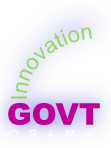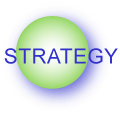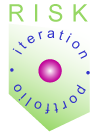Volatility, Uncertainly and Opportunity—Move Crisply while Competitors Are in Disarray
 Now that the Year in Review 2008 has summarized key trends, we are in excellent position for 2009 prognostications, so welcome to Part II. As all experienced executives know, risk and reward are inseparable twins, and periods of disruption elevate both, so you will have much more opportunity to produce uncommon value than normal.
Now that the Year in Review 2008 has summarized key trends, we are in excellent position for 2009 prognostications, so welcome to Part II. As all experienced executives know, risk and reward are inseparable twins, and periods of disruption elevate both, so you will have much more opportunity to produce uncommon value than normal.
This is a high-stakes year in which we can expect surprises. Web 2.0 and social networks can help because they increase flexibility and adaptiveness. Alas, those who succeed will have to challenge conventional thinking considerably, which is not a trivial exercise in normal times. The volatility that many businesses face will make it more difficult because many of their clients and/or employees will be distracted. It will also make it easier because some of them will perceive that extensive change is afoot, and Web 2.0 will blend in with the cacaphony. Disruption produces unusual changes in markets, and the people that perceive the new patterns and react appropriately emerge as new leaders.
2009 Predictions
These are too diverse to be ranked in any particular order. Please share your reactions and contribute those that I have missed.
- The global financial crisis will continue to add significant uncertainty in the global economy in 2009 and probably beyond. I have no scientific basis for this, but there are excellent experts of every flavor on the subject, so take your pick. I believe that we are off the map, and anyone who says that he’s sure of a certain outcome should be considered with a healthy skepticism.
- All I can say is my friends, clients and sources in investment and commercial banking tell me it’s not over yet, and uncertainty is the only certainty until further notice. This has not yet been fully leeched.
- Western governments, led the the U.S., are probably prolonging the pain because governments usually get bailouts wrong. However, voters don’t have the stomachs for hardship, so we are probably trading short-term “feel good” efforts for a prolonged adjustment period.
 Widespread social media success stories in 2009 in the most easily measurable areas such as talent management, business development, R&D and marketing.
Widespread social media success stories in 2009 in the most easily measurable areas such as talent management, business development, R&D and marketing.
- 2008 saw a significant increase in enterprise executives’ experimentation with LinkedIn, Facebook, YouTube and enterprise (internal) social networks. These will begin to bear fruit in 2009, after which a “mad rush of adoption” will ensue.
- People who delay adoption will pay dearly in terms of consulting fees, delayed staff training and retarded results.
- Internal social networks will largely disappoint. Similar to intranets, they will produce value, but few enterprises are viable long-term without seamlessly engaging the burgeoning external world of experts. In general, the larger and more disparate an organization’s audience is, the more value it can create, but culture must encourage emergent, cross-boundary connections, which is where many organizations fall down.
- If you’re a CIO who’s banking heavily on your behind-the-firewall implementation, just be aware that you need to engage externally as well.
- Do it fast because education takes longer than you think.
- There are always more smart people outside than inside any organization.
 Significant consolidation among white label social network vendors, so use your usual customary caution when signing up partners.
Significant consolidation among white label social network vendors, so use your usual customary caution when signing up partners.
- Due diligence and skill portability will help you to mitigate risks. Any vendor worth their salt will use standardized SOA-friendly architecture and feature sets. As I wrote last year, Web 2.0 is not your father’s software, so focus on people and process more than technology.
- If your vendor hopeful imposes process on your people, run.
- No extensive M&A among big branded sites like Facebook, LinkedIn and Twitter although there will probably be some. The concept of the social ecosystem holds that nodes on pervasive networks can add value individually. LinkedIn and Facebook have completely different social contexts. “Traditional” executives tend to view disruptions as “the new thing” that they want to put into a bucket (“let them all buy each other, so I only have to learn one!”). Wrong. This is the new human nervous system, and online social venues, like their offline counterparts, want specificity because they add more value that way. People hack together the networks to which they belong based on their goals and interests.
- LinkedIn is very focused on the executive environment, and they will not buy Facebook or Twitter. They might buy a smaller company. They are focused on building an executive collaboration platform, and a large acquisition would threaten their focus. LinkedIn is in the initial part of its value curve, they have significant cash, and they’re profitable. Their VCs can smell big money down the road, so they won’t sell this year.
- Twitter already turned down Facebook, and my conversations with them lead me to believe that they love their company; and its value is largely undiscovered as of yet. They will hold out as long as they can.
 Facebook has staying power past 2009. They don’t need to buy anyone of import; they are gaining global market share at a fast clip. They already enable customers to build a large part of the Facebook experience, and they have significant room to innovate. Yes, there is a backlash in some quarters against their size. I don’t know Mark Zuckerberg personally, and I don’t have a feeling for his personal goals.
Facebook has staying power past 2009. They don’t need to buy anyone of import; they are gaining global market share at a fast clip. They already enable customers to build a large part of the Facebook experience, and they have significant room to innovate. Yes, there is a backlash in some quarters against their size. I don’t know Mark Zuckerberg personally, and I don’t have a feeling for his personal goals.- I was sad to see that Dow Jones sold out to NewsCorp and, as a long-time Wall Street Journal subscriber, I am even more dismayed now. This will prove a quintessential example of value destruction. The Financial Times currently fields a much better offering. The WSJ is beginning to look like MySpace! As for MySpace itself, I don’t have a firm bead on it but surmise that it has a higher probability of major M&A than the aforementioned: its growth has stalled, Facebook continues to gain, and Facebook uses more Web 2.0 processes, so I believe it will surpass MySpace in terms of global audience.
- In being completely dominant, Google is the Wal-Mart of Web 2.0, and I don’t have much visibility into their plans, but I think they could make significant waves in 2009. They are very focused on applying search innovation to video, which is still in the initial stages of adoption, so YouTube is not going anywhere.
- I am less familiar with Digg, Xing, Bebo, Cyworld. Of course, Orkut is part of the Googleverse.
- Significant social media use by the Obama Administration. It has the knowledge, experience and support base to pursue fairly radical change. Moreover, the degree of change will be in synch with the economy: if there is a significant worsening, expect the government to engage people to do uncommon things.
 Change.gov is the first phase in which supporters or any interested person is invited to contribute thoughts, stories and documents to the transition team. It aims to keep people engaged and to serve the government on a volunteer basis
Change.gov is the first phase in which supporters or any interested person is invited to contribute thoughts, stories and documents to the transition team. It aims to keep people engaged and to serve the government on a volunteer basis- The old way of doing things was to hand out form letters that you would mail to your representative. Using Web 2.0, people can organize almost instantly, and results are visible in real-time. Since people are increasingly online somewhere, the Administration will invite them from within their favorite venue (MySpace, Facebook…).
- Obama has learned that volunteering provides people with a sense of meaning and importance. Many volunteers become evangelists.
- Increasing citizen activism against companies and agencies, a disquieting prospect but one that I would not omit from your scenario planning (ask yourself, “How could people come together and magnify some of our blemishes?” more here). To whit:
- In 2007, an electronic petition opposing pay-per-use road tolls in the UK reached 1.8 million signatories, stalling a major government initiative. Although this did not primarily employ social media, it is indicative of the phenomenon.
- In Q4 2008, numerous citizen groups organized Facebook groups (25,000 signatures in a very short time) to oppose television and radio taxes, alarming the Swiss government. Citizens are organizing to stop paying obligatory taxes—and to abolish the agency that administers the tax system. Another citizen initiative recently launched on the Internet collected 60,000 signatures to oppose biometric passports. German links. French links.
- In the most audacious case, Ahmed Maher is using Facebook to try to topple the government of Egypt. According to Wired’s Cairo Activists Use Facebook to Rattle Regime, activists have organized several large demonstrations and have a Facebook group of 70,000 that’s growing fast.
 Executive employment will continue to feel pressure, and job searches will get increasingly difficult for many, especially those with “traditional” jobs that depend on Industrial Economy organization.
Executive employment will continue to feel pressure, and job searches will get increasingly difficult for many, especially those with “traditional” jobs that depend on Industrial Economy organization.
- In tandem with this, there will be more opportunities for people who can “free-agent” themselves in some form.
- In 2009, an increasing portion of executives will have success at using social networks to diminish their business development costs, and their lead will subsequently accelerate the leeching of enterprises’ best and brightest, many of whom could have more flexibility and better pay as independents. This is already manifest as displaced executives choose never to go back.
- The enterprise will continue to unbundle. I have covered this extensively on the Transourcing website.
- Enterprise clients will start asking for “strategy” to synchronize social media initiatives. Web 2.0 is following the classic adoption pattern: thus far, most enterprises have been using a skunk works approach to their social media initiatives, or they’ve been paying their agencies to learn while delivering services.
 In the next phase, beginning in 2009, CMOs, CTOs and CIOs will sponsor enterprise level initiatives, which will kick off executive learning and begin enterprise development of social media native skills. After 1-2 years of this, social media will be spearheaded by VPs and directors.
In the next phase, beginning in 2009, CMOs, CTOs and CIOs will sponsor enterprise level initiatives, which will kick off executive learning and begin enterprise development of social media native skills. After 1-2 years of this, social media will be spearheaded by VPs and directors.- Professional services firms (PwC, KPMG, Deloitte..) will begin scrambling to pull together advisory practices after several of their clients ask for strategy help. These firms’ high costs do not permit them to build significantly ahead of demand.
- Marketing and ad agencies (Leo Burnett, Digitas…) will also be asked for strategy help, but they will be hampered by their desires to maintain the outsourced model; social media is not marketing, even though it will displace certain types of marketing.
- Strategy houses (McKinsey, BCG, Booz Allen…) will also be confronted by clients asking for social media strategy; their issue will be that it is difficult to quantify, and the implementation piece is not in their comfort zone, reducing revenue per client.
- Boutiques will emerge to develop seamless strategy and implementation for social networks. This is needed because Web 2.0 and social networks programs involve strategy, but implementation involves little technology when compared to Web 1.0. As I’ll discuss in an imminent article, it will involve much more interpersonal mentoring and program development.
 Corporate spending on Enterprise 2.0 will be very conservative, and pureplay and white label vendors (and consultants) will need to have strong business cases.
Corporate spending on Enterprise 2.0 will be very conservative, and pureplay and white label vendors (and consultants) will need to have strong business cases.
- CIOs have better things to spend money on, and they are usually reacting to business unit executives who are still getting their arms around the value of Web 2.0, social networks and social media.
- Enterprise software vendors will release significant Web 2.0 bolt-on improvements to their platforms in 2009. IBM is arguably out in front with Lotus Connections, with Microsoft Sharepoint fielding a solid solution. SAP and Oracle will field more robust solutions this year.
- The financial crunch will accelerate social network adoption among those focused on substance rather than flash; this is akin to the dotbomb from 2001-2004, no one wanted to do the Web as an end in itself anymore; it flushed out the fluffy offers (and well as some really good ones).
- Social media can save money.. how much did it cost the Obama campaign in time and money to raise $500 million? Extremely little.
- People like to get involved and contribute, when you can frame the activity as important and you provide the tools to facilitate meaningful action. Engagement raises profits and can decrease costs. Engaged customers, for example, tend to leave less often than apathetic customers.
- Social media is usually about engaging volunteer contributors; if you get it right, you will get a lot of help for little cash outlay.
 Social media presents many new possibilities for revenue, but to see them, look outside existing product silos. Focus on customer experience by engaging customers, not with your organization, but with each other. Customer-customer communication is excellent for learning about experience.
Social media presents many new possibilities for revenue, but to see them, look outside existing product silos. Focus on customer experience by engaging customers, not with your organization, but with each other. Customer-customer communication is excellent for learning about experience.
- Microblogging will completely mainstream even though Twitter is still quite emergent and few solid business cases exist.
- Twitter (also Plurk, Jaiku, Pownce {just bought by Six Apart and closed}, Kwippy, Tumblr) are unique for two reasons: they incorporate mobility seamlessly, and they chunk communications small; this leads to a great diversity of “usage context”
- Note that Dell sold $1 million on Twitter in 2008, using it as a channel for existing business.
- In many businesses, customers will begin expecting your organization to be on Twitter; this year it will rapidly cease to be a novelty.
2009 Recommendations
 Web 2.0 will affect business and culture far more than Web 1.0 (the internet), which was about real-time information access and transactions via a standards-based network and interface. Web 2.0 enables real-time knowledge and relationships, so it will profoundly affect most organizations’ stakeholders (clients, customers, regulators, employees, directors, investors, the public…). It will change how all types of buying decisions are made.
Web 2.0 will affect business and culture far more than Web 1.0 (the internet), which was about real-time information access and transactions via a standards-based network and interface. Web 2.0 enables real-time knowledge and relationships, so it will profoundly affect most organizations’ stakeholders (clients, customers, regulators, employees, directors, investors, the public…). It will change how all types of buying decisions are made.
As an individual and/or an organization leader, you have the opportunity to adopt more quickly than your peers and increase your relevance to stakeholders as their Web 2.0 expectations of you increase. 2009 will be a year of significant adoption, and I have kept this list short, general and actionable. I have assumed that your organization has been experimenting with various aspects of Web 2.0, that some people have moderate experience. Please feel free to contact me if you would like more specific or advanced information or suggestions. Recommendations are ranked in importance, the most critical at the top.
 What: Audit your organization’s Web 2.0 ecosystem, and conduct your readiness assessment. Why: Do this to act with purpose, mature your efforts past experimentation and increase your returns on investment.
What: Audit your organization’s Web 2.0 ecosystem, and conduct your readiness assessment. Why: Do this to act with purpose, mature your efforts past experimentation and increase your returns on investment.
- The ecosystem audit will tell you what stakeholders are doing, and in what venues. Moreover, a good one will tell you trends, not just numbers. In times of rapid adoption, knowing trends is critical, so you can predict the future. Here’s more about audits.
- The readiness assessment will help you to understand how your value proposition and resources align with creating and maintaining online relationships. The audit has told you what stakeholders are doing, now you need to assess what you can do to engage them on an ongoing basis. Here’s more about readiness assessments.
- What: Select a top executive to lead your organization’s adoption of Web 2.0 and social networks. Why: Web 2.0 is changing how people interact, and your organizational competence will be affected considerably, so applying it to your career and business is very important.
- This CxO should be someone with a track record for innovation and a commitment to leading discontinuous change. Should be philosophically in synch with the idea of emergent organization and cross-boundary collaboration.
- S/He will coordinate your creation of strategy and programs (part-time). This includes formalizing your Web 2.0 policy, legal and security due diligence.
 What: Use an iterative portfolio approach to pursue social media initiatives in several areas of your business, and chunk investments small.
What: Use an iterative portfolio approach to pursue social media initiatives in several areas of your business, and chunk investments small.
Why: Both iteration and portfolio approaches help you to manage risk and increase returns.- Use the results of the audit and the readiness assessment to help you to select the stakeholders you want to engage.
- Engage a critical mass of stakeholders about things that inspire or irritate them and that you can help them with.
- All else equal, pilots should include several types of Web 2.0 venues and modes like blogs, big branded networks (Facebook, MySpace), microblogs (Twitter), video and audio.
- As a general rule, extensive opportunity exists where you can use social media to cross boundaries, which usually impose high costs and prevent collaboration. One of the most interesting in 2009 will be encouraging alumni, employees and recruits to connect and collaborate according to their specific business interests. This can significantly reduce your organization’s business development, sales and talent acquisition costs. For more insight to this, see Alumni 2.0.
- Don’t overlook pilots with multiple returns, like profile management programs, which can reduce your talent acquisition and business development costs. Here’s more on profile management.
- What: Create a Web 2.0 community with numerous roles to enable employees flexibility.
Why: You want to keep investments small and let the most motivated employees step forward.- Roles should include volunteers for pilots, mentors (resident bloggers, video producers and others), community builders (rapidly codify the knowledge you are gathering from pilots), some part-time more formal roles. Perhaps a full-time person to coordinate would make sense. Roles can be progressive and intermittent. Think of this as open source.
- To stimulate involvement, the program must be meaningful, and it must be structured to minimize conflicts with other responsibilities.
 What: Avoid the proclivity to treat Web 2.0 as a technology initiative. Why: Web 1.0 (the Internet) involved more of IT than does Web 2.0, and many people are conditioned to think that IT drives innovation; they fall in the tech trap, select tools first and impose process. This is old school and unnecessary because the tools are far more flexible than the last generation software with which many are still familiar.
What: Avoid the proclivity to treat Web 2.0 as a technology initiative. Why: Web 1.0 (the Internet) involved more of IT than does Web 2.0, and many people are conditioned to think that IT drives innovation; they fall in the tech trap, select tools first and impose process. This is old school and unnecessary because the tools are far more flexible than the last generation software with which many are still familiar.
- People create the value when they get involved, and technology often gets in the way by making investments in tools that impose process on people and turn them off. Web 2.0 tools impose far less process on people.
- More important than what brand you invest in is your focus on social network processes and how they add value to existing business processes. If you adopt smartly, you will be able to transfer assets and processes elsewhere while minimizing disruption. More likely is that some brands will disappear (Pownce closed its doors 15 December). When you focus your organization on mastering process and you distribute learning, you will be more flexible with the tools.
- Focus on process and people, and incent people to gather and share knowledge and help each other. This will increase your flexibility with tools.
- What: Manage consulting, marketing and technology partners with a portfolio strategy. Why: Maximize flexibility and minimize risk.
- From the technology point of view, there are three main vendor flavors: enterprise bolt-on (i.e. Lotus Connections), pureplay white label vendors (SmallWorldLabs) and open (Facebook, LinkedIn). As a group, pureplays have the most diversity in terms of business models, and the most uncertainty. Enterprise bolt-ons’ biggest risk is that they lag significantly behind. More comparisons here.
- Fight the urge to go with one. If you’re serious about getting business value, you need to be in the open cross-boundary networks. If you have a Lotus or Microsoft relationship, compare Connections and Sharepoint with some pureplays to address private social network needs. An excellent way to start could be with Yammer.
- Be careful when working with consulting- and marketing-oriented partners who are accustomed to an outsourced model. Web 2.0 is not marketing; it is communicating to form relationships and collaborate online. It does have extensive marketing applications; make sure partners have demonstrated processes for mentoring because Web 2.0 will be a core capability for knowledge-based organizations, and you need to build your resident knowledge.
Parting Shots
I hope you find these thoughts useful, and I encourage you to add your insights and reactions as comments. If you have additional questions about how to use Web 2.0, please feel free to contact me. I wish all the best to you in 2009.

Christopher,
This is one of the best 2009 predictions and recommendations for web 2.0/enterprise 2.0 I have seen. Hats off to you and hope to meet you at one of the social media conferences. Are you presenting at Enterprise 2.0?
Will certainly reference you in our innovation and web2.0 strategy work.
Regards,
Victoria
Victoria, many thanks, maybe the focus and experience come through! I am presenting at the Social Networking Conference in Miami, a conference track on social networks in healthcare. I’m also doing a new pre-conference workshop on enterprise social network initiatives. Please see: http://tinyurl.com/8s8hbo
What do you think adoption will be like this year?
Hi Christopher,
Thanks for reaching out and sharing. I’m still digesting but I found points #7 and #9 above relevant to my work as Measurement Strategist with Grey Advertising SF. One aspect that is interesting is the blurring of lines between advertising and public relations when it comes to “social media” and “conversational media.”
Actually, I can’t disclose too much but am posting some general insights here:
http://tipofthespearblog.com/2008/12/measuring-widgets.html
Regards,
Domenico
PS: I appreciate the very well organized presentation of this – easy to read!
[…] about how to use Web 2.0, please feel free to contact me. I wish all the best to you in 2009. • Email to a friend • Article Search • Related • View comments • Track comments • […]